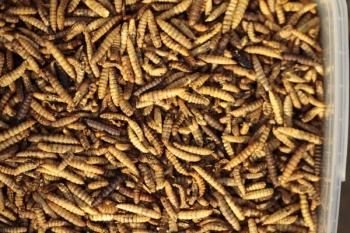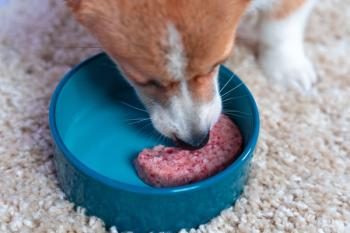
- dvm360 December 2019
- Volume 50
- Issue 12
Cats fed experimental diet are found to provoke fewer symptoms in allergic people
Purina Institute symposium highlights research on humans designed to quantify clinical response to potential new allergen-neutralizing product.
In a recent symposium put on by the Purina Institute, veterinary researchers, specialists and other cat enthusiasts gathered in Boulder, Colorado, to hear the latest feline health and nutrition findings from this animal nutrition powerhouse. The event, titled “The Science of Cats,” included updates on the development of Purina's forthcoming diet product designed to reduce symptoms in people with cat allergies.
Here's an overview of how the diet works (for more details, visit
Purina researchers have demonstrated that their diet reduces levels of Fel d 1 in the environment. Sounds great-but does the product actually make a difference for people who are allergic? (Many of these folks, by the way, have been told to get rid of their cat but would rather suffer sniffles, congestion and itchy eyes than relinquish their feline family member.) That was the next step in the process.
To conduct a study to find out, human allergist H. James Wedner, MD, of Washington University School of Medicine in St. Louis, collaborated with molecular immunologist Ebenezer Satyaraj, PhD, and others from Purina to set up a series of environmental chambers (see image above). These chambers, according to Dr. Wedner's symposium proceedings, were loaded with blankets used by cats fed either the anti-Fel d 1 experimental diet or a control diet. Researchers used those blankets to expose cat allergy patients for three hours-“or until their symptoms became intolerable,” Dr. Satyaraj told the audience.
People with cat allergies spent three hours in a 6-by-6-foot "exposure chamber" loaded with blankets covered with cat hair (real or fake). Researchers then determined whether cats that ate a certain diet provoked fewer symptoms.
Eight cats were enrolled in the trial-four cats ate the control diet and four cats ate the test diet for eight weeks. During the last four weeks, blankets used by the cats were collected and loaded into the exposure chambers.
In the human phase of the trial, researchers first exposed all participants to blankets known to have high levels of Fel d 1, a process known as “priming.” Then, each participant was exposed to the blankets from either the control or test diet cats in double-blind random fashion. The primary outcome variable was the change in total nasal symptom score or total ocular symptom score.
The results showed that the amount of Fel d 1 in the chambers was significantly reduced in the test diet cat blankets when compared with the control diet blankets. When it came to symptom scores, there was a statistically significant difference in the nasal symptom score between the exposure to high-dose Fel d 1 (the initial exposure) and blankets from the treated cats, but there was no significant difference between the high-dose exposure and the control cat blankets.
“This proof of concept study demonstrated that cat allergy sufferers who have a high-level exposure to cat allergen (largely Fel d 1) in their home will have a significant improvement in their upper airways symptoms by feeding cats a diet containing anti-Fel d 1 IgY,” Dr. Wedman's proceedings state. “It provided a new and exciting method for decreasing allergy symptoms due to cat allergy.”
Articles in this issue
almost 6 years ago
FDA approves longer-lasting feline preventivealmost 6 years ago
Radiography: How to use this imaging approach in acute vomiting patientsalmost 6 years ago
Speaking their languagealmost 6 years ago
Congress passes PACT Act making severe animal cruelty a federal offensealmost 6 years ago
Just approved: Generic clomipramine for canine separation anxietyalmost 6 years ago
Talk about birthing pains!almost 6 years ago
Economic trends in veterinary medicinealmost 6 years ago
How cannabidiol is changing the pet treat industryalmost 6 years ago
AAFP releases new feline zoonosis guidelinesalmost 6 years ago
IDEXX CEO Jon Ayers stepping down after 17 years with companyNewsletter
From exam room tips to practice management insights, get trusted veterinary news delivered straight to your inbox—subscribe to dvm360.






